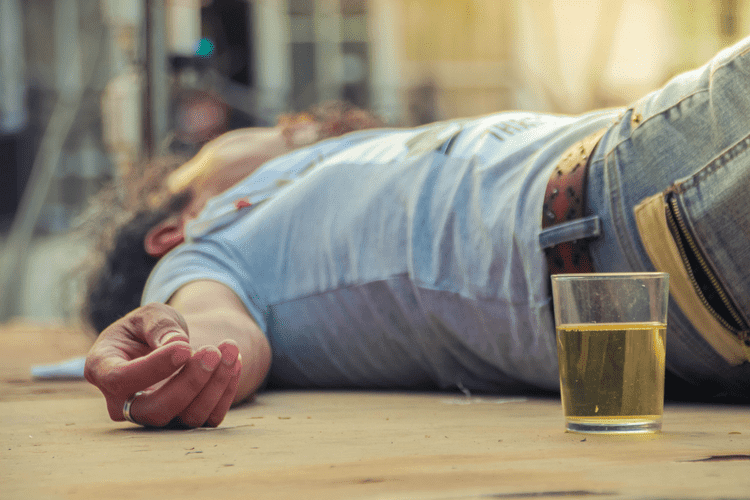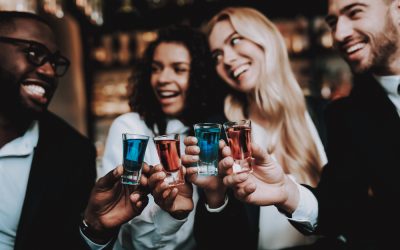Contents
- New scientific evidence supports aversion therapy to fight alcoholism
- Contents
- fMRI scans
- Aversion Therapy: What Is It, Is It Effective & Why Is It Controversial?
- Modern Aversion Therapy: Antabuse Medication
- Anticipatory avoidance learning in the treatment of alcoholism: a record of therapeutic failure
Such aversions have been widely reported by clinicians and have been confirmed by recent psychophysiological evidence. Long standing evidence of treatment effectiveness is found in the results of private hospitals which have consistently produced 1-yr abstinence rates approximating 60%. Few experimental evaluations have been completed, as is generally the case for all alcoholism treatments, but those which used methodologically sound temporal parameters during conditioning have supported the clinical efficacy of emetic therapy. The clear need for more definitive research notwithstanding, there are compelling indications that emetic therapy is a useful component of multimodal treatment within certain alcoholic populations. Many alcoholics could probably benefit from expanded treatment availability.

As a result, drinking brings about a set of distinct digestive pains and troubles. Likewise, abstaining from drinking while on the medication promotes a great sense of well-being and euphoria. In all cases of aversion therapy for smoking, the idea is that you need to take some kind of action that makes smoking more unpleasant than it is pleasurable. You have to counteract the “high” of the nicotine with a “down” of equal or greater strength. Whether that’s through shocks, foul tastes or rapidly smoked cigarettes is up to you. Medically administered, shock therapy is actually the primary method of expert-overseen aversion techniques in smoking cessation.
The first known use of aversion therapy was in the 1930s by Charles Shadel as a treatment for chronic alcoholism. Thousands of people have since been treated for a myriad of undesirable behaviors using aversion therapy. Chesser found that with aversion therapy 50% of alcoholics abstained for at least a year and that the treatment was more successful than no treatment. This supports the effectiveness of interventions based on classical conditioning.
New scientific evidence supports aversion therapy to fight alcoholism
Marris is a freelance writer who is passionate about health and wellness, particularly in the areas of mental health and women’s health. She hopes that her articles will play a role in ensuring that these areas are discussed more widely. In her free time, she also writes short stories and reads anything she can get her hands on.
Aversion therapy has been used in the context of subconscious or compulsive habits, such as chronic nailbiting, hair-pulling , or skin-picking . The language we use around people with addiction disorders are powerful enough to help or hurt them. “Sixty-nine percent of the people were sober after one year of participating in the study,” Hoffman said. SEATTLE — About 88,000 people die in this country from alcohol-related causes, according to the National Institutes of Health.

In addition to chemical aversion conditioning, during therapy session and post-treatment follow up visits, patients learn relapse prevention strategies to help them cope with craving/desire and other relapse risks. For example, they learn to identify and avoid/get out of high risk situations (e.g., Larimer et al., 1999). With some types of treatments, patients who crave alcohol may be trained to use that craving as a conscious warning that they are entering a situation that puts them at increased risk of relapse. However, the treatment used in the current study appears to work by reducing craving, and even causing the patients to become aversive/avoidant of alcohol when exposed to alcohol cues. Patients still reported strong aversion/avoidance to alcohol immediately before their booster session at 30 days and immediately before their booster session 90 days post-discharge.
All clinical alcohol use disorder treatments were conducted at Schick Shadel by Schick Shadel staff. The University of Washington, Seattle , was not involved in treating the patients. Patients already diagnosed and admitted to Schick Shadel Hospital for treatment of alcohol use disorder were identified as potential study subjects during their initial medical assessments by SSH physician coauthors (K.D. and R.R). These patients were offered the opportunity to participate in a craving and fMRI research study to be conducted at the University of Washington Seattle. All fMRI scans were conducted at the UW fMRI Research Laboratory center at Diagnostic Imaging Sciences Center/Integrated Brain Imaging Center (DISC/IBIC).
Contents
Lionrock’s treatment plans use CBT with an appropriate mixture of other methods, for example Motivational Interviewing, to find the right fit for our clients. Best practices addiction treatment, defined by the Substance Abuse and Mental Health Services Agency and the American Society of Addiction Medicine is “evidence-based”. This term is generally meant to contrast with more faith-based modalities of treatment or support, among which are the 12 Step tradition programs like Alcoholics Anonymous. Aversion therapy, sometimes used as a treatment for addiction, works by creating an association between an unpleasant feeling and a maladaptive behavior. Talkspace articles are written by experienced mental health-wellness contributors; they are grounded in scientific research and evidence-based practices.
Our goal at Talkspace is to provide the most up-to-date, valuable, and objective information on mental health-related topics in order to help readers make informed decisions. One method involves paying a considerable fee to family or even a charity every time the individual seeks to gamble. This acts as both a psychological deterrent and a physical means of restricting the amount of money that don’t drink alcohol while taking these medications one has available to gamble. A similar technique is punishing the act of gambling with some kind of self-imposed consequence such as writing a public apology letter. The use of aversion therapy to „treat“ homosexuality was declared dangerous by the American Psychological Association in 1994. In 2006, ethical codes were established by both the APA and the American Psychiatric Association.
Can I drink coffee on Antabuse?
During disulfiram therapy, patients may need to limit their caffeine intake if nausea, nervousness, tremor, restlessness, palpitations, or insomnia complaints occur.
Verywell Mind uses only high-quality sources, including peer-reviewed studies, to support the facts within our articles. Read our editorial process to learn more about how we fact-check and keep our content accurate, reliable, and trustworthy. A subtle form of this technique is often used as a self-help strategy for minor behavior issues.
fMRI scans
This Clinical Policy Bulletin may be updated and therefore is subject to change. Before the American Psychiatric Association deemed it an ethical violation, naltrexone for alcoholism some researchers used aversion therapy to “treat” homosexuality. Aversion therapy isn’t often a first-line treatment and other therapies are preferred.
- With CBT, addictions are viewed as over-learned behaviors, but more effective behaviors can be practiced until they take their place.
- Whether it’s applying unpleasant substances to the nails or covering them up to make them inaccessible, many nail biters have seen success with the aversion method.
- All patients met DSM-4 criteria for alcohol use disorder, and reported craving alcohol pre-treatment.
- Also identified were patient-specific pleasant scenes that had nothing to do with alcohol ingestion.
- All viewers of this content, especially those taking prescription or over-the-counter medications, should consult their physicians before beginning any nutrition, supplement or lifestyle program.
They further noted that acetaldehyde , EtOH’s first metabolite, has been classically considered aversive and useful in the pharmacologic therapy of alcoholics. The authors state that these results provide in vivo and in vitro evidence for a key role of ACD in EtOH motivational properties and its activation of the mesolimbic DA system. They further note that these observations suggest that ACD would oppose its well-known peripherally originating aversive properties by increasing VTA DA neuronal activity. These findings could help in devising new effective pharmacologic therapies in alcoholism. They claim that when the aversive stimulus is taken away, the individual will return to the unwanted behavior. Exposure therapy is a therapy used to help people slowly face their fears, and CBT, or cognitive behavioral therapy, is a type of therapy that focuses on how thoughts and feelings affect actions.
Aversion Therapy: What Is It, Is It Effective & Why Is It Controversial?
Others might view off-putting images while they smoke, including images of charred lungs and other forms of smoke damage. Aversion therapy, when used in a nonconsensual manner, is widely considered to be inhumane. At the Judge Rotenberg Educational Center, aversion therapy is used to perform behavior modification in students as part of the center’s applied 10 most common reasons for addiction relapse behavioral analysis program. Aversion therapy uses conditioning but focuses on creating a negative response to an undesirable stimulus, such as drinking alcohol or using drugs. Most therapists believe that aversion therapy shouldn’t be used as a first-line treatment approach, as other forms of psychotherapy may be safer and more effective long term.
What to avoid when taking Antabuse?
Do not use alcohol-containing foods, products, or medicines, such as elixirs, tonics, sauces, vinegars, cough syrups, mouth washes, or gargles.
Britannica celebrates the centennial of the Nineteenth Amendment, highlighting suffragists and history-making politicians. Britannica is the ultimate student resource for key school subjects like history, government, literature, and more. As a member, you’ll also get unlimited access to over 84,000 lessons in math, English, science, history, and more. Plus, get practice tests, quizzes, and personalized coaching to help you succeed.
Interleukin-1β induced an inflammatory phenotype in human AVICs, which was prevented by inhibition of nuclear factor-κβ. The IL-1β stimulation resulted in significantly increased production of the inflammatory cytokines, IL-6 and IL-8, the chemokine monocyte chemoattractant protein-1, and intercellular adhesion molecule-1. Inhibition of nuclear factor-κβ prevented these changes, whereas inhibition of extracellular signal regulated kinase-1/2 had no effect. Hajek, P., Stead, L. F., West, R., Jarvis, M., Hartmann‐Boyce, J., & Lancaster, T. Behavioral therapies are mostly used in combination with other therapies [ or biological ] it is therefore difficult to evaluate their effectiveness.
How long is a course of Antabuse?
Antabuse should be taken for six weeks to six months as required. A review of the effectiveness of therapy should be undertaken before continuation on a longer term basis. A few patients would require higher doses of disulfiram and longer duration of treatment under close supervision.
Aversion therapy is most commonly used to treat drug and alcohol addictions. As they read through the statements they administer a two-second electric shock for each gambling related statement. The patient set the intensity of the shock themselves aiming to make the shock painful but distressing. Pliny the Elder attempted to heal alcoholism in the first century Rome by putting putrid spiders in alcohol abusers‘ drinking glasses.
Anticipatory avoidance learning in the treatment of alcoholism: a record of therapeutic failure
In shock therapy, the patient meets with the doctor on a set schedule to undergo this rather unpleasant routine. Whenever the patient is struck with the urge to smoke or begins the process of lighting up, a shock is administered by the overseeing doctor. With repeated application, the idea is that the brain becomes quite convinced that the hunt for nicotine leads directly to too much discomfort to be worth it. Ultimately, however, aversion therapy is an accepted practice among today’s physicians. It’s a non-invasive behavior modification method that has shown good results in trials and through patient testimonials, and there are many ways to customize aversion therapy for people from all walks of life. Aversion therapy was first used to treat alcohol abuse and has since been used to treat many unwanted behaviors.
Six students have died of preventable incidents at the school since it opened in 1971. In 1935, Charles Shadel turned a colonial mansion in Seattle into the Shadel Sanatorium where he began treating alcoholics for their substance use disorder. His enterprise was launched with the help of gastroenterologist Walter Voegtlin and psychiatrist Fred Lemere. Together, they created a medical practice that exclusively treated chronic alcoholism through Pavlovian conditioned reflex aversion therapy.

And H.G.H for use during fMRI assessments of patients‘ brain activity during imagined/self-generated drinking experiences. Aversion therapy may be helpful for stopping specific types of unwanted behaviors or habits. While many studies have shown promising short-term results, the long-term effectiveness is questionable.
As with CBT, aversion therapy is based on the principle that behaviors are learned and can be unlearned. The type of behavior to be corrected also plays a role in the effectiveness of aversion therapy, as it tends to be more effective with some behaviors than others. The stimulus used in therapy is another factor, as the use of electric shocks tends to be less effective than the use of nausea-inducing chemicals. For behavioral addiction such as gambling aversion therapy involves associating such stimuli and behavior with a very unpleasant unconditioned stimulus, such as an electric shock. It involves administering an electrical shock to the patient’s arm, leg or even genitals every time the person engages in the unwanted behavior. Faradic therapy is one form in which shocks are administered to muscles.